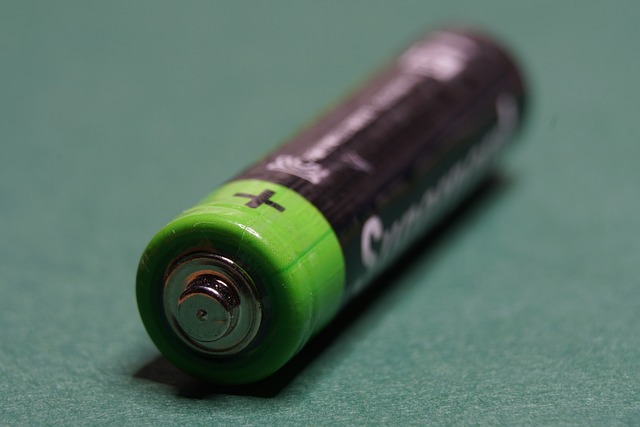Smartphone batteries naturally degrade over time, impacting device longevity and performance. Factors such as charge cycles, temperature exposure, and software updates influence battery health, necessitating eventual replacement. Replacing a smartphone battery can be done by users with the right DIY kit, which includes precision tools for safe disassembly and reassembly, or by professionals in high-volume repair centers equipped with specialized equipment. Proper maintenance, including regular calibration of the charge cycle, avoiding extreme temperatures, and keeping software up to date, is crucial for extending battery life and maintaining optimal performance. Regularly replacing a smartphone battery can ensure continued reliability and functionality of your device. Always consult specific manufacturer guidelines or seek professional help if you're unsure about performing a replacement yourself.
Smartphone users often face the challenge of depleting battery life, a common inconvenience in our technology-driven age. While many devices come with non-replaceable batteries, there’s a growing market for smartphones with user-replaceable batteries, offering a practical solution to extend device usage without immediate replacements. This article delves into the essential tools and kits necessary for replacing your smartphone battery safely and effectively, ensuring your device remains powered throughout your day. Whether you’re a DIY enthusiast or part of a high-volume repair center, understanding the right equipment is crucial. From top smartphone models with user-replaceable batteries to professional-grade tools for bulk replacements, this guide covers it all. Learn how to maintain your new battery to ensure optimal performance and longevity.
- Understanding the Need for Battery Replacement in Smartphones
- Top Smartphone Models with User-Replaceable Batteries
- Essential Safety Precautions When Replacing a Smartphone Battery
- The Best Battery Replacement Kits for DIY Enthusiasts
- Professional-Grade Tools for Battery Replacement in High-Volume Centers
- Step-by-Step Guide to Safely Swapping Out Your Smartphone Battery
- Maintenance Tips to Prolong Your Newly Installed Smartphone Battery's Life
Understanding the Need for Battery Replacement in Smartphones

As smartphones become increasingly integral to our daily lives, their batteries inevitably degrade over time. This degradation can manifest as reduced battery life or the inability to hold a charge, often leading to the need for battery replacement. Understanding the factors that contribute to battery wear and tear is crucial for recognizing when a smartphone’s battery needs to be replaced. Factors such as the number of charge cycles, temperature extremes, and software updates can all affect battery health. When a battery can no longer deliver the necessary power to support the phone’s operations efficiently, replacing it becomes a prudent choice for maintaining device performance and longevity. The process of replacing a smartphone battery is not overly complex but does require precision and attention to detail, especially if the user opts for a DIY approach. Professional services are also available, offering reliable battery replacements that can significantly enhance the device’s functionality and extend its usable life. Regularly assessing your smartphone’s battery performance and proactively considering a replacement when needed can prevent unexpected power outages and ensure your device remains a dependable companion in an increasingly interconnected world.
Top Smartphone Models with User-Replaceable Batteries

When it comes to smartphone power management, one of the most empowering features for users is the ability to replace the battery themselves. This not only extends the lifespan of the device but also offers a level of convenience and cost-effectiveness. A select group of manufacturers stands out by offering models with user-replaceable batteries, which is a boon for tech enthusiasts and anyone who prioritizes long-term device reliability. Among these are devices from Sony, which have been known for their swappable batteries for years. Models like the Sony Xperia series provide users with the option to carry spare batteries and swap them out as needed, ensuring that their smartphone is always ready to go without a charger. Another manufacturer that supports this feature is Motorola, particularly with its Moto G line. These phones offer a removable back panel, giving users direct access to the battery for quick swaps. Additionally, models like the Motorola One series have capitalized on this by combining it with robust performance and competitive pricing. For those looking for cutting-edge technology without sacrificing replaceability, devices such as the Fairphone are designed with sustainability in mind, including user-replaceable batteries that can be sourced directly from the manufacturer. This not only supports a greener approach to tech but also provides users with a sense of security, knowing they can maintain their phone’s performance over time. Whether it’s for long trips where charging options are limited or simply for the convenience of swapping out power on the fly, smartphones with user-replaceable batteries like these offer a unique value proposition that is hard to ignore for users who want control over their device’s longevity and functionality.
Essential Safety Precautions When Replacing a Smartphone Battery

When attempting to replace a smartphone battery, safety should be your utmost priority. This delicate task requires careful handling to prevent electrical hazards and ensure the device functions optimally after the replacement. Firstly, disconnect the phone from any power sources and remove the SIM card tray to avoid potential short-circuiting. It’s imperative to follow manufacturer guidelines specific to your model for battery removal and installation, as deviations can lead to damage or injury. Additionally, use only genuine replacement batteries recommended by the manufacturer to maintain device stability and performance. These batteries undergo rigorous testing to match the original’s safety and efficiency standards.
Secondly, ensure you have a steady hand and a well-lit workspace to avoid mishaps caused by fumbling or poor visibility. Use tools like anti-static wrist straps to prevent electrostatic discharge (ESD) that could harm both your device and yourself. Safety precautions also extend to proper disposal of the old battery, as some components are hazardous and require specialized recycling facilities. By adhering to these safety measures, you can minimize risks and successfully replace your smartphone battery without compromising your well-being or your device’s integrity.
The Best Battery Replacement Kits for DIY Enthusiasts

For those who take their smartphone maintenance into their own hands, investing in a reliable battery replacement kit is paramount for successful DIY projects. These kits are meticulously curated to include all the essential tools required to replace a battery safely and efficiently. A top-rated kit typically contains precision screwdrivers in various sizes to match different smartphone models, suction handles for gripping tricky components without causing damage, prying tools to carefully separate parts, and adhesive tools to secure new components in place. High-quality tweezers are also a staple, as they help handle tiny components with dexterity. Additionally, the best kits come with protective films or covers to safeguard your device’s screen during the replacement process, ensuring that your smartphone remains undamaged. When selecting a battery replacement kit, consider those that include a high-grade battery tester to check the capacity of the new cell against the manufacturer’s specifications, and a set of spare parts such as screws and adhesive strips, which can be invaluable for both initial installation and future repairs. These kits not only streamline the process of replacing a smartphone battery but also provide peace of mind, knowing that you have the right tools at your disposal to tackle this task confidently.
Professional-Grade Tools for Battery Replacement in High-Volume Centers

In high-volume repair centers where the replacement of batteries in smartphones is a daily routine, professional-grade tools are indispensable for efficiency and safety. These specialized tools are designed to handle multiple replacements throughout the day with precision and care for the device’s structural integrity. A key component in this ecosystem is the high-precision battery replacement toolkit, which includes suction tools, prying tools, spudgers, and plastic opening tools. These tools facilitate the careful removal of the phone’s back cover, screen, and any other components that obstruct access to the battery. Moreover, for centers processing a vast array of devices, ergonomically designed stands and cradles are crucial to securely hold the phones during the replacement process, ensuring both the technician’s comfort and the device’s stability.
The actual battery removal is typically executed using a combination of specialized tweezers and battery removal tools. These instruments are engineered to handle different types of batteries and phone models, providing a gentle yet firm grip that prevents any damage to the delicate contacts or casing. Additionally, thermal management tools, such as heat guns or battery warmers, may be employed to ease the battery disconnection process, which is critical when dealing with devices that have glued-in batteries or those with adhesives that require warming for a clean removal. The combination of these professional-grade tools and a systematic approach to battery replacement ensures that smartphone batteries are replaced effectively, maintaining the integrity of the device and providing a quality service that meets customer expectations.
Step-by-Step Guide to Safely Swapping Out Your Smartphone Battery

When the time comes to replace your smartphone battery, a task that typically falls outside the scope of standard user maintenance, it’s crucial to approach it with care and precision. The process of swapping out a smartphone battery can vary depending on the device model, but the general steps remain consistent across most modern smartphones. Begin by powering down your smartphone completely to avoid any risk of electrical shock or short-circuiting during the battery removal process. Next, remove the back cover and any components such as SIM card trays or storage cards that may obstruct access to the battery compartment. Use a suitable prying tool to gently detach the battery casing without applying excessive force that could damage internal components. Once the casing is off, disconnect the battery terminals with a spudger or a similar small flat tool, ensuring you note which terminal corresponds to positive and negative connections. Carefully slide the old battery out of its housing, taking care not to puncture or bend it.
With the old battery removed, place your new battery in its cradle, aligning it with the contacts. Reconnect the battery terminals by carefully inserting the connectors into their respective slots, ensuring a secure connection without over-tightening, as this can damage the terminals or the battery itself. Reassemble the phone by replacing the battery casing, sealing the device back to its original integrity. Finally, power on your smartphone to confirm that the new battery is functioning correctly. Always refer to the manufacturer’s guidelines for specific instructions tailored to your device model, and if you’re unsure about any step in the process, it’s advisable to seek assistance from a professional technician. Remember, handling lithium-ion batteries can be risky; prioritize safety throughout the replacement process.
Maintenance Tips to Prolong Your Newly Installed Smartphone Battery's Life

When you’ve replaced your smartphone’s battery, adopting certain maintenance practices can significantly extend its lifespan and maintain optimal performance. Firstly, regularly calibrate your device’s charge by letting it discharge completely before recharging. This helps the battery’s software to accurately gauge how much power remains. Additionally, avoid charging your phone overnight or until it’s entirely depleted, as extreme charges can strain the battery. Maintain a consistent charging routine, plugging in when the battery reaches 20% and unplugging once it hits 80%. Extreme temperatures can damage lithium-ion batteries; therefore, avoid exposing your device to direct sunlight or very hot and cold environments. Keep your smartphone’s software up to date, as updates often include battery performance improvements. Lastly, remove cases that trap heat when charging, and consider using a high-quality, compatible replacement battery to ensure the best compatibility and longevity for your device. By following these tips, you can prolong the life of your newly installed smartphone battery and enjoy uninterrupted use of your favorite gadgets.
In conclusion, maintaining a smartphone’s longevity is pivotal, and understanding how to safely replace its battery can be empowering for any user. With the right tools and knowledge—as detailed in this article—users of top smartphone models with user-replaceable batteries can extend their devices’ lifespans. Whether you’re a DIY enthusiast or part of a high-volume service center, having the best battery replacement kits and professional-grade tools on hand is crucial for a seamless and secure battery swap process. Always remember to follow essential safety precautions and utilize the step-by-step guide provided to ensure your new battery functions optimally. Additionally, adhering to maintenance tips can help prolong the life of your newly installed smartphone battery. By equipping yourself with this information, you’re well-prepared to handle any future battery replacement needs on your own terms.
